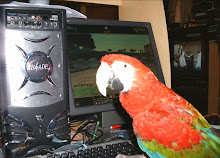Well, today is the last day on the current job and the start of the major packing for the move from the Bay Area and up to beautiful Shasta Lake area of Northern California.
Astronomers Will Get Gravitational Wave Alerts Within 30 Seconds
-
Any event in the cosmos generates gravitational waves, the bigger the
event, the more disturbance. Events where black holes and neutron stars
collide can...
7 hours ago







